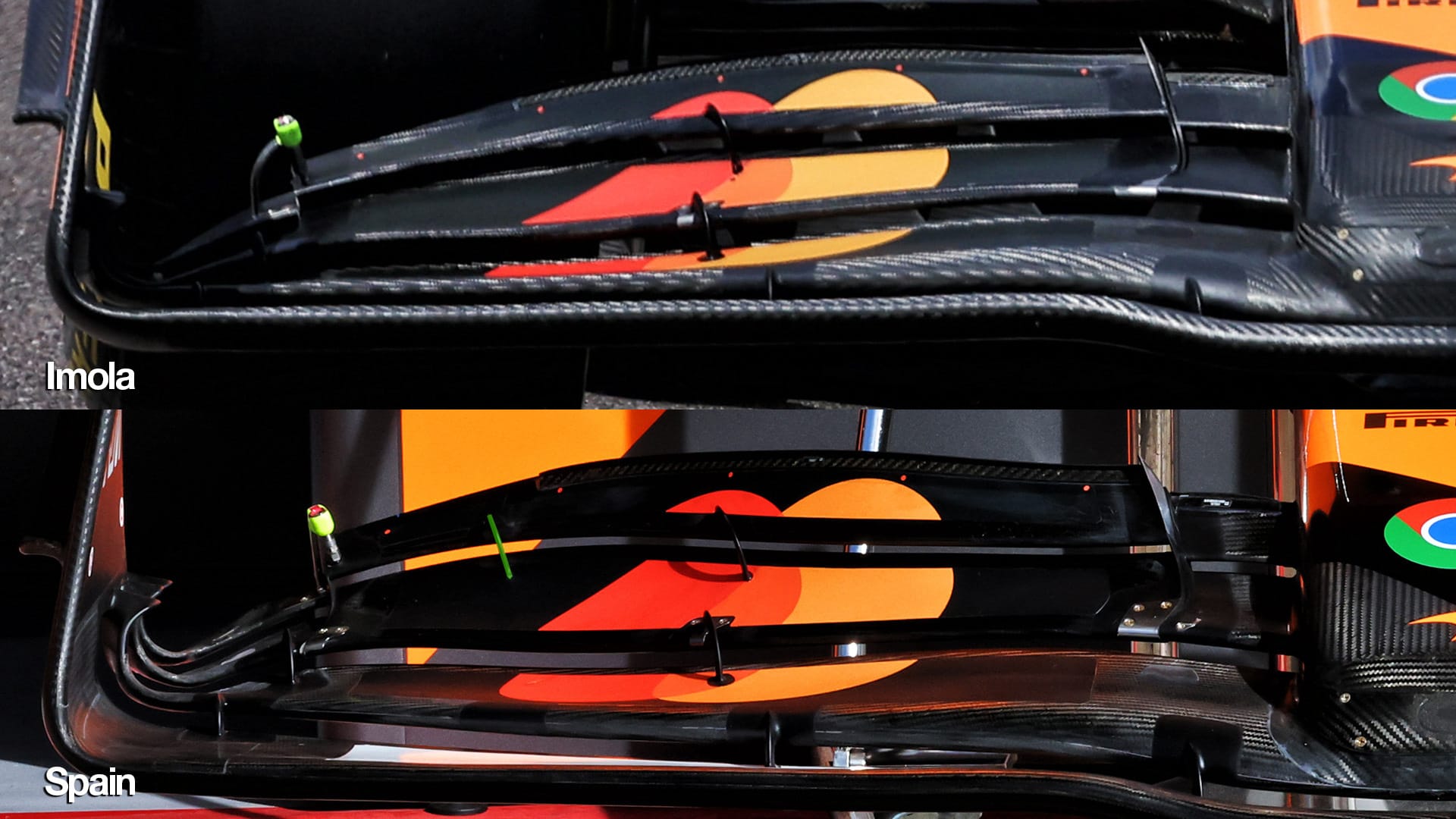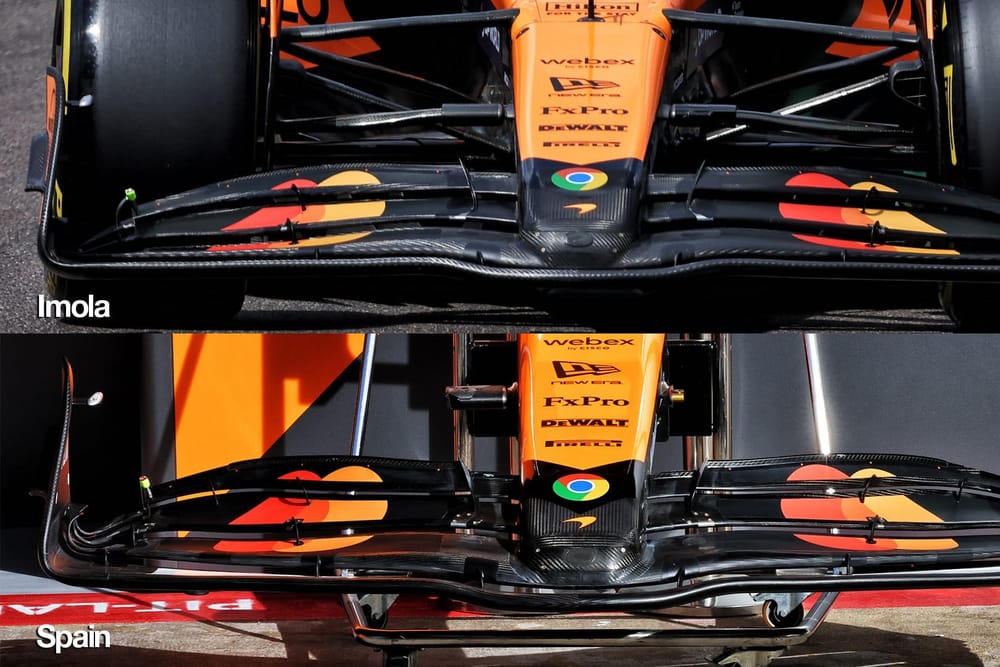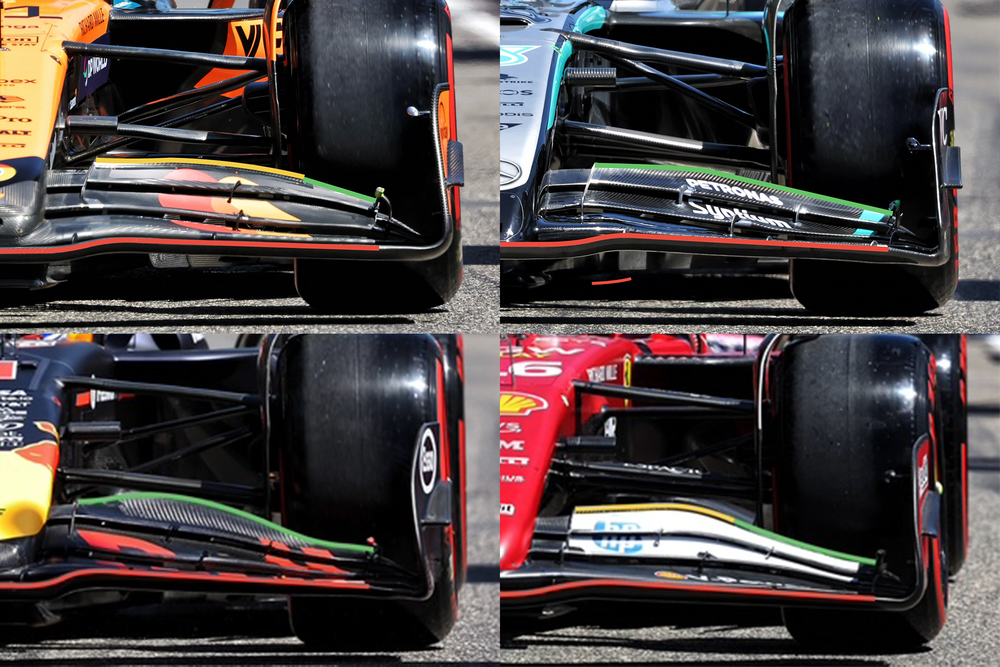The first images of McLaren's revised front wing aimed at passing Formula 1's tougher flexi wing tests highlight how the devil will be in the detail of what teams have had to change.
This weekend's Spanish Grand Prix is the first race where new, tougher FIA tests come into force to clamp down on teams exploiting aeroelasticity too much.
Under these new tests, the allowed movement from a 1000N force drops from 15mm to 10mm when applied on both sides, and 20mm to 15mm when applied on one side.
A further test on the front wing flap sees a deflection limit when a 60N load is applied drop from 5mm to 3mm.
While there has been talk of the changes teams need to make potentially triggering a major overhaul in the pecking order, that does not mean the wings will look radically different.
In fact, as the first images of new front wings emerge, it shows how the modifications that F1 teams are making to their wings are more in the accessory components than redesigns of the wing flaps themselves.
The other factor to take into account is that many of the changes teams have had to make are invisible because they involve strengthening the internal carbonfibre of the wing to make it more robust and less prone to flexing at speed.

As the above McLaren comparison image shows of its Spain design versus what it raced at Imola, the wings appear at first glance to be near-identical.
However, one notable tweak is the addition of an extra support stay between the top two wing elements, highlighted in green.
This will add extra support to the upper flap to stop it flexing back as much under load.
The jury remains out on exactly what impact the changes to the front wings will make.
Some teams believe that the revisions will not have an impact on the pecking order, but others are more convinced it could lead to a dramatic shake-up.
Ferrari team principal Fred Vasseur said in Monaco last weekend: "We are working on it for ages now.
"This can be a game-changer for everybody because we don't know the impact on every single team of the new regulation.
"We will be focused on this to have better exploitation of the front wing."
The key headache that the wing changes brings will be in making it more difficult to adjust for the balance compromises between low-speed understeer and high-speed oversteer that are an inherent characteristic of the current generation of ground effect F1 cars.




